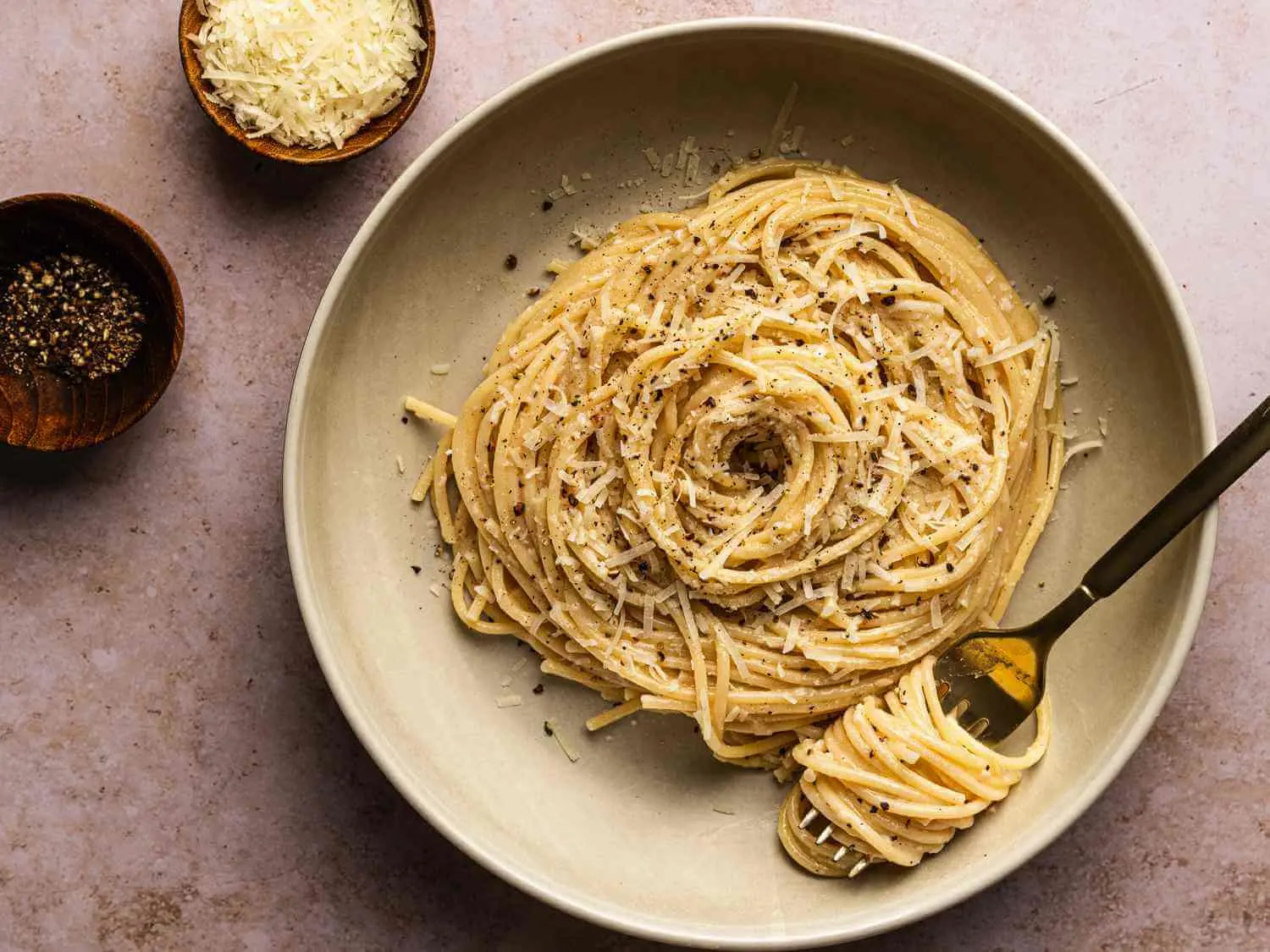
Cacio e Pepe
Classic Roman pasta with pecorino cheese and black pepper.
Ingredients
- •Spaghetti
- •Pecorino Romano
- •Black pepper
- •Olive oil
- •Salt
Instructions
Cook Pasta
Boil pasta until al dente
Prepare Sauce
Mix cheese, pepper and pasta water
Combine
Toss pasta with cheese mixture until creamy
Cacio e Pepe is one of Rome's most iconic pasta dishes, celebrated for its beautiful simplicity. With just three main ingredients - pasta, Pecorino Romano cheese, and black pepper - this dish perfectly embodies the "less is more" philosophy of Italian cuisine.
The origins of Cacio e Pepe can be traced back to the shepherds of the Roman countryside, who would carry dried pasta, aged pecorino, and black peppercorns during their long journeys. These ingredients were perfect for travel as they didn't spoil easily, and when combined with a bit of pasta cooking water, they created a creamy, satisfying meal.
Making authentic Cacio e Pepe requires careful technique. The key lies in creating a creamy sauce by mixing finely grated Pecorino Romano with hot pasta water, which helps melt the cheese evenly. The pasta must be perfectly al dente, and freshly ground black pepper is essential - it's not just a seasoning but a main character in this dish, providing both heat and aromatic depth.
While the traditional recipe is sacred in Rome, some modern interpretations might include a mix of Pecorino and Parmigiano-Reggiano for a milder flavor, or the addition of butter to help emulsify the sauce. However, purists insist that only Pecorino Romano should be used for authentic flavor.
In Rome, Cacio e Pepe is typically served as a primo (first course) in restaurants, though it's also a popular late-night dish, perfect after an evening out. The pasta shape is traditionally tonnarelli or spaghetti, chosen for their ability to hold the creamy sauce.
While this dish is relatively simple, it's quite rich in calories and saturated fat due to the high cheese content. A single serving can contain a significant portion of your daily recommended calcium and protein intake. Those who are lactose intolerant or watching their sodium intake should be mindful, as Pecorino Romano is a particularly salty cheese. However, when enjoyed in moderation, it can be part of a balanced diet.
